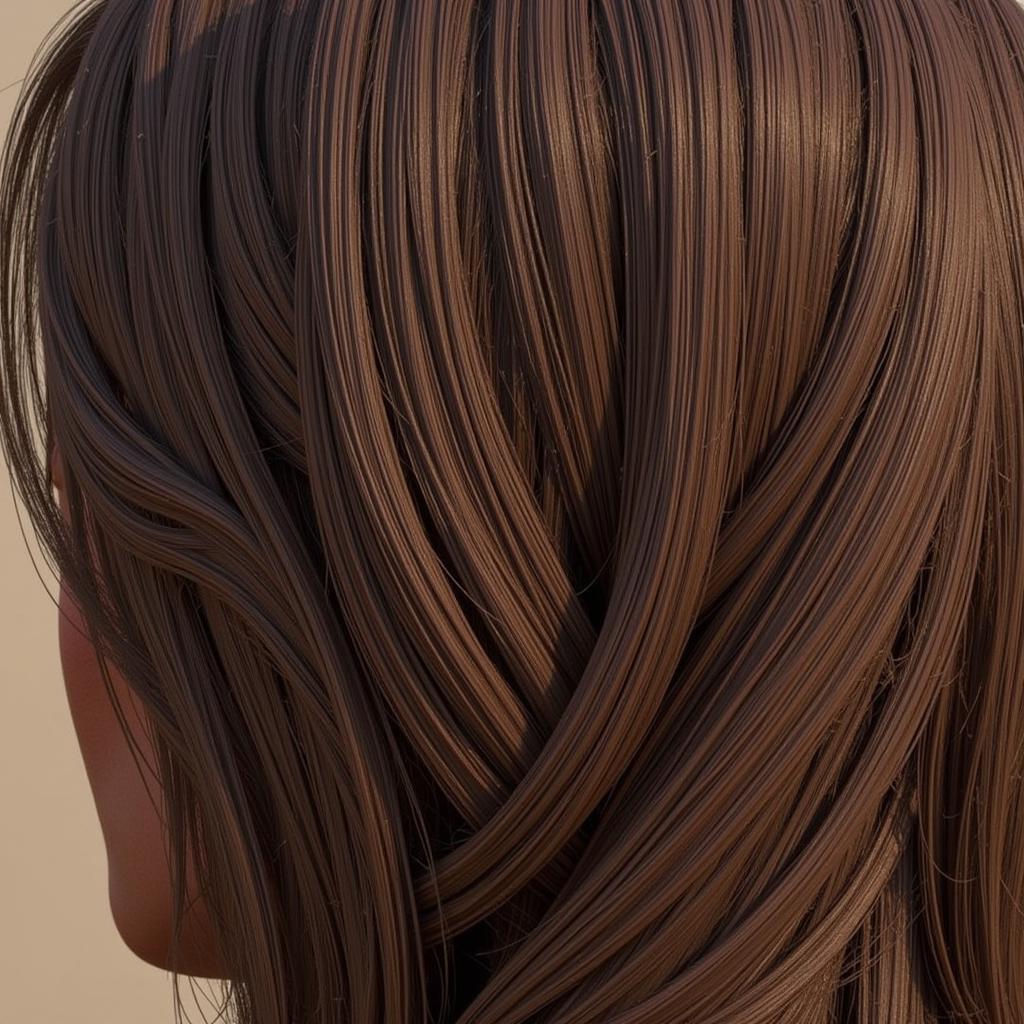Hair Meshing is revolutionizing the way we create realistic and dynamic hair in video games, movies, and even virtual reality experiences. From the flowing locks of a fantasy heroine to the meticulously groomed beard of a rugged adventurer, hair meshing allows developers and artists to craft hair with unprecedented detail and control. This article delves into the intricacies of hair meshing, exploring its techniques, benefits, and the impact it has on the visual landscape of digital entertainment.
What is Hair Meshing?
Hair meshing is the process of creating a 3D mesh that represents hair or fur. Unlike traditional methods that relied on texture-based approaches or simple geometric shapes, hair meshing allows for individual strands of hair to be modeled and simulated, resulting in a much more natural and believable appearance. This technique involves creating a network of interconnected vertices and polygons that form the structure of the hair, allowing it to interact with light, wind, and other environmental factors in a realistic manner.
The Benefits of Hair Meshing
Hair meshing offers a significant leap forward in visual fidelity compared to older techniques. Here are some key advantages:
- Realism: Hair meshing allows for the creation of incredibly realistic hair, capturing the nuances of individual strands, their movement, and how they interact with light.
- Control: Artists have unparalleled control over the shape, style, and movement of the hair, allowing for intricate hairstyles and dynamic simulations.
- Flexibility: Hair meshes can be easily animated and deformed, making them ideal for characters in motion or scenes with complex interactions.
- Scalability: Hair meshing techniques can be adapted to create a wide range of hair and fur styles, from short and spiky to long and flowing.
 Realistic Hair Mesh Example in a Video Game
Realistic Hair Mesh Example in a Video Game
Techniques in Hair Meshing
Several techniques are employed in hair meshing, each with its own strengths and weaknesses. Some common methods include:
- Guide-based meshing: This technique involves creating guide curves that define the overall shape and flow of the hair, with a mesh then generated around these guides.
- Strand-based meshing: This approach models individual strands of hair as separate meshes, offering the highest level of detail but also increased complexity.
- Texture-based meshing: This method combines elements of traditional texture-based hair representation with meshing techniques to achieve a balance between realism and performance.
Hair Meshing in Game Development
Hair meshing has become increasingly prevalent in game development, allowing for more immersive and believable characters. This technology enables developers to create characters with unique and expressive hairstyles, enhancing the overall visual experience and storytelling. From the intricate braids of a warrior to the windswept hair of a sailor, hair meshing adds a layer of depth and personality to virtual worlds.
The Future of Hair Meshing
The future of hair meshing is bright, with ongoing research and development pushing the boundaries of what’s possible. Advancements in real-time rendering and simulation techniques are paving the way for even more realistic and dynamic hair in interactive experiences. Imagine a world where virtual characters have hair that reacts realistically to every gust of wind, every touch, and every movement – that’s the potential of hair meshing.
How is hair meshing different from traditional hair rendering?
Traditional hair rendering often relies on textures and alpha maps to simulate hair, while hair meshing creates a 3D model of individual strands, offering greater realism and control. (Answer in under 40 words)
What software is used for hair meshing?
Various software packages, including specialized 3D modeling and animation tools, are used for hair meshing. Examples include Blender, Maya, 3ds Max, and ZBrush. (Answer in under 40 words)
Conclusion
Hair meshing has transformed the way we perceive and interact with digital characters and environments. Its ability to create realistic and dynamic hair adds a layer of immersion and believability that was previously unimaginable. As technology continues to evolve, hair meshing promises to play an increasingly vital role in shaping the future of visual storytelling and interactive entertainment, taking us one step closer to truly blurring the lines between the virtual and the real.
FAQ
- What are the limitations of hair meshing?
- How can I learn hair meshing?
- Is hair meshing computationally expensive?
- What are some examples of games that utilize hair meshing effectively?
- How does hair meshing improve the realism of characters?
- Can hair meshing be used for other things besides hair?
- What is the difference between guide-based and strand-based hair meshing?
Suggested further reading on VNG Game:
- Character Design in Video Games
- The Evolution of Game Graphics
- Advanced Animation Techniques
When you need assistance, please contact us at Phone Number: 0902476650, Email: [email protected] or visit us at 139 Đ. Võ Văn Kiệt, Hoà Long, Bà Rịa, Bà Rịa – Vũng Tàu, Vietnam. We have a 24/7 customer support team.





